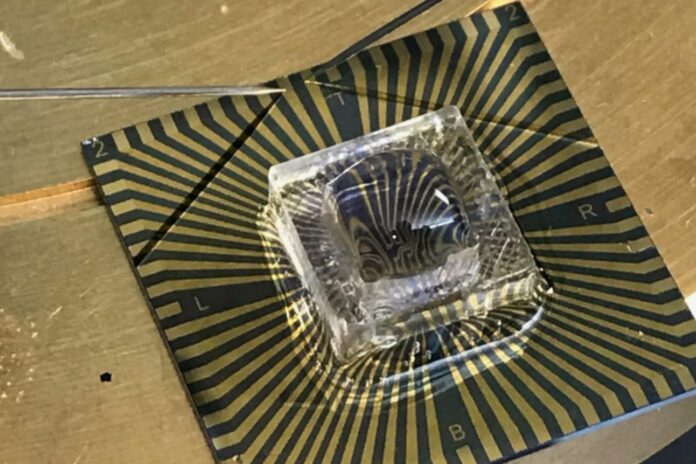Are you experiencing a cough, sore throat, and congestion, but unsure if it’s COVID-19 or the flu? Traditional tests rely on chemical reactions to identify potential viruses, but a new approach using nanomaterials could revolutionize the way we diagnose respiratory illnesses.
Researchers have developed a cutting-edge device that utilizes a single-atom-thick nanomaterial to detect the presence of both COVID-19 and flu viruses. This innovative sensor can identify the viruses at much lower levels and significantly faster than conventional tests, providing quicker and more accurate diagnoses.
At the upcoming American Chemical Society (ACS) spring meeting, the researchers will reveal their findings.
According to Deji Akinwande, Ph.D., who will be presenting the study at the conference, the symptoms of COVID-19 and the flu share many similarities, leading to confusion in distinguishing between the two illnesses.
“When both of these viruses are circulating together as they did earlier this winter, it would be immensely useful to have a sensor that can simultaneously detect whether you have COVID, flu, none of the above or both.”
Dr. Akinwande, based at The University of Texas at Austin, believes that the novel device they are developing has the potential to detect various infections in addition to COVID-19 and the flu.
In collaboration with postdoctoral researcher Dmitry Kireev, Ph.D., the team built the COVID-19 and flu sensor using graphene, a hexagonal lattice pattern of single-layered carbon atoms. Due to its exceptional thinness, graphene possesses exceptional sensitivity to electrical changes in its surroundings. Dr. Akinwande and fellow researchers are excited about the possibilities of utilizing graphene and similar nanomaterials to create sensors for numerous diverse applications.
“These ultra-thin nanomaterials generally hold the record for best sensitivity, even down to the detection of single atoms, and they can improve the ability to detect very small quantities of basically anything that needs to be sensed, whether it’s bacteria or viruses, in gas or in blood,” Akinwande adds.
Dr. Akinwande’s team previously developed a temporary tattoo made of graphene that could monitor blood pressure by placing pairs of sensors along the arteries of the arm. One sensor sends out an electrical current, and its partner detects it to determine blood flow.
To construct the infection sensor, the researchers had to modify graphene to detect viral proteins. To accomplish this, they drew inspiration from the immune system, which generates antibodies that can recognize and bind to specific pathogens. The team attached antibodies against the SARS-CoV-2 virus and the flu virus to graphene, allowing the antibodies to bind to their target proteins when an infected person’s sample is placed on the sensor, leading to a change in the electrical current.
As the researchers lacked the necessary safety equipment to test the square-inch sensor with live, active flu or SARS-CoV-2 viruses, they employed virus proteins in a fluid that simulated saliva. Their findings revealed that the sensor could accurately detect the virus proteins even at very low levels. This sensitivity suggests that the sensor could be used to identify the much sparser viral particles present in breath, according to Akinwande.
Moreover, the sensor provided rapid results, producing outcomes in just 10 seconds of introducing a sample. In comparison, conventional COVID-19 tests can take several minutes to hours, depending on their type, and an FDA-approved COVID and flu dual test requires roughly 30 minutes to provide results.
Dr. Akinwande and his team are striving to enhance the sensor’s capabilities further, such as extending the range of viruses it can identify. They are currently working on a sensor that can detect SARS-CoV-2 variants, including omicron and delta, with funding support from the National Science Foundation. Although their present focus is on a two-variant design, they anticipate the test could be modified to simultaneously detect even more variants.
Image Credit: Dmitry Keeriv
